导读:说到清明节吃什么,不同地方有不同的饮食习俗,如江南吃青团子、客家人吃艾粄、厦门吃薄饼……具体清明节吃什么?小编为您介绍了8种节气美食,一起来看看吧!
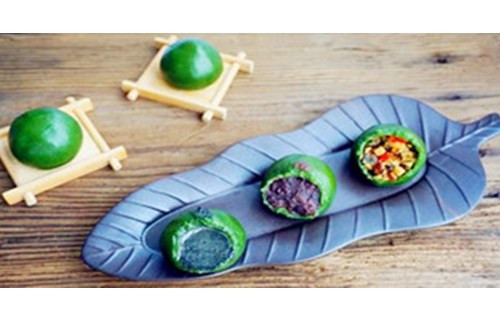
As Tomb Sweeping Day draws near, here are eight traditional food people from different parts of China consume on the day.
清明节马上就要到了,我们为您介绍中国不同地区的人们在清明时节的八大传统美食。
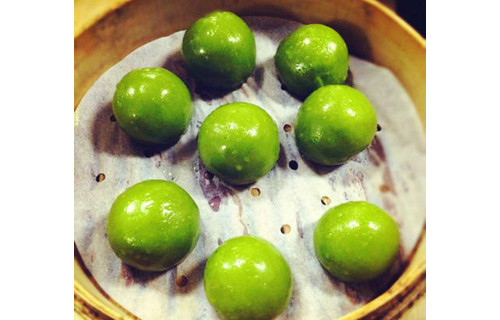
1. Green rice ball
1.青团
People in the Jiangnan region often eat this kind of green colored balls made from glutinous rice on Tomb Sweeping Day. The green color is from the juice of brome grass that is added in the rice.
清明时节,江南一带有吃这种青团子的风俗习惯。青团是用一种名叫“雀麦草”的植物捣的汁添加糯米粉制成。
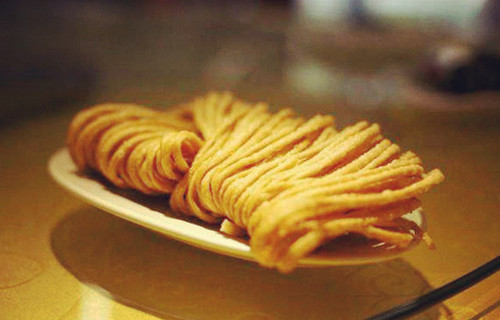
2. San zi
2.馓子
In both Northern and Southern China, it is a tradition to eat san zi, or fried dough twist, on Tomb Sweeping Day. The differences between san zi made by Northern and Southern people lie in sizes and materials. The former one is larger, often made from wheat and the latter is finer and made from rice.
我国南北各地清明节有吃馓子(一种油炸的麻花)的食俗。北方和南方的馓子在形状和用料上有所不同。北方馓子大方洒脱,以麦面为主料;南方馓子精巧细致,多以米面为主料。
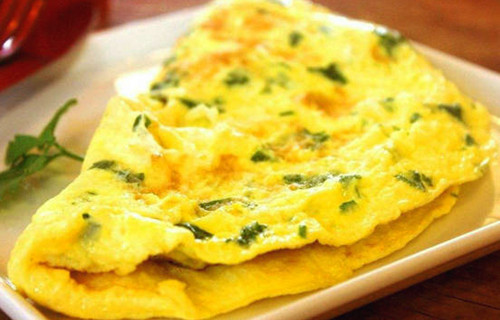
3. Spring onion and omelette
3.大葱蛋饼
On Tomb Sweeping Day, there is a tradition to eat spring onion and omelette in Qingdao in Shandong province. People believe these two kinds of food can improve eyesight and make eyes brighter. In old times, pupils often send eggs to their teachers to show respect on the day.
清明节,青岛有吃大葱和蛋饼的习俗。人们认为吃这两种食物可以改善视力,让眼睛更明亮。旧时,学生们通常会在这天给老师送鸡蛋以示尊敬。
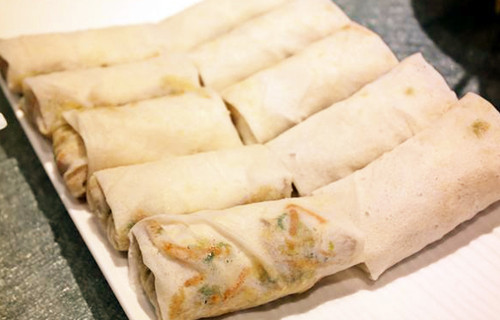
4. Thin pancake
4、薄饼
People in Xiamen in Fujian province often have thin pancakes on Tomb Sweeping Day. Dried seaweed, omelette, veggies and chili sauce are added in the pancakes to enhance the flavor.
福建省厦门民谚有云“清明吃薄饼”。饼里通常会加上海苔、蛋卷、蔬菜、辣酱等让其口感更好。
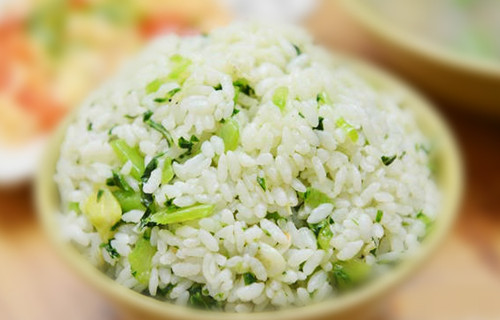
5. Steamed rice with leaf mustard
5、芥菜饭
In many places in eastern Fujian province, people often steamed rice with leaf mustard on Tomb Sweeping Day to prevent scabies and other skin diseases.
清明时节,闽东各地多有吃芥菜饭的食俗。据说吃了它可以不生疥疮和其他皮肤病。
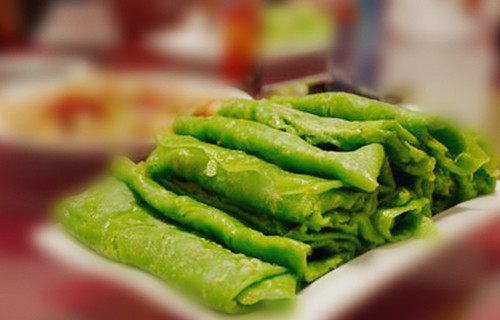
6. Cudweed herb rolls
6、鼠曲草卷
The best time to pick fresh cudweed herb is around Tomb Sweeping Day. The herb is often added in veggie rolls or dumplings and consumed on the day. In South China, people add the wild plant also in steamed buns.
清明前夕正是采摘新鲜鼠曲草的好时节。这种药草通常加在素卷或者饺子里,在清明当天吃。中国南方则喜欢把这种野菜做到包子里。
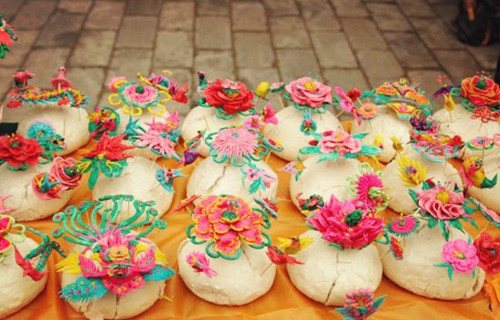
7. Zitui bun
7、子推馍
The steamed bun is named after Jie Zitui, a famous hermit of the Spring and Autumn Period (770-476BC). Often each Zitun bun weighs 0.5kg and many colorful dough animals and flowers are decorated on the bun. Eggs and jujubes are added inside the bun to increase the sweetness. People in northern Shaanxi province have the tradition to eat this kind of bun on Tomb Sweeping Day.
这种馒头是以春秋时期(公元前770-476年)著名隐士介子推的名字命名,每个馒头大概有一斤重,装饰成各式动物或者花朵的样子,还添加有鸡蛋和枣子让它吃起来更甜。陕北在清明节会吃这种子推馍。
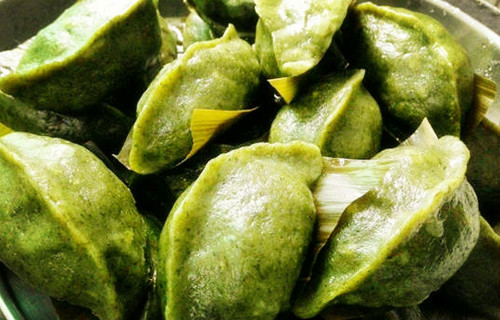
8. Ai ban
8. 艾粄
To Hakka people in China, ai ban, rice dumplings made from wormwood and rice, is a necessary dish on Tomb Sweeping Day. They blend wormwood paste and glutinous rice powder together and add sesame, peanuts and black-eyed beans. After steaming the dumplings for 15-20 minutes, the food is ready.
艾粄是清明节客家人必备的传统小食,它是一种由艾草和糯米粉做成的粽子样的食物,将艾草泥加上糯米粉一齐和拌成团,再将芝麻、花生、眉豆等馅料包进面团里。放入锅中蒸15-20分钟后即可出炉。